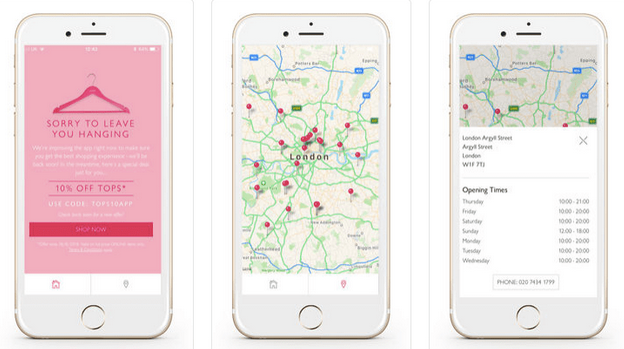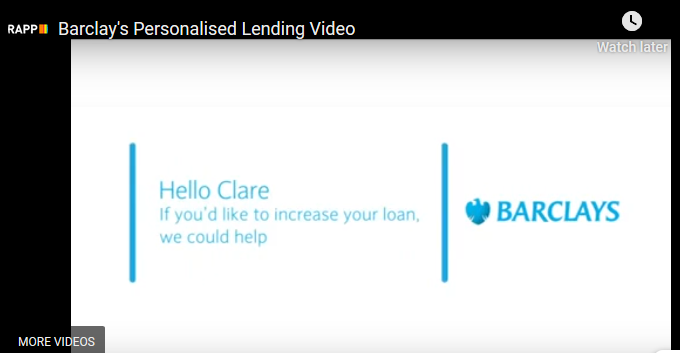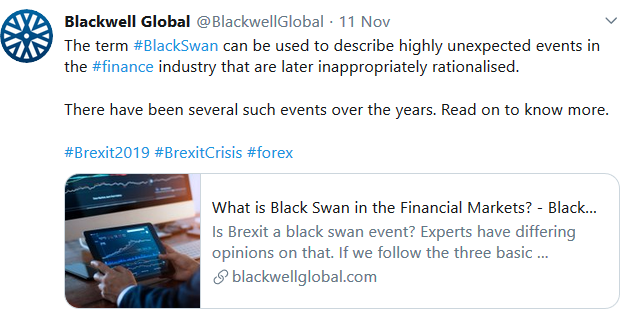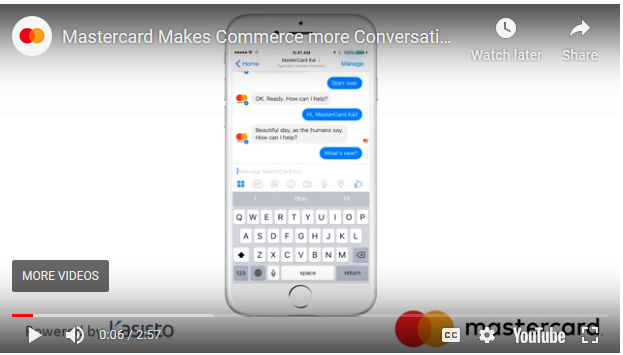When it comes to marketing, knowing your audience and staying on top of trends is essential, helping to set you apart from competitors. Marketing strategies must be constantly tweaked and reviewed in light of up-to-date stats. As director of a content marketing agency passionate about achieving results, we’ve done the hard work for you. Pour yourself a latte and check out 100 Marketing Stats For 2020 divided into handy categories.
Content Marketing – An Overview
[ctt title=”The content marketing industry is projected to be worth nearly half a trillion dollars by 2020. This shows how content should be a key focus for any company. ” tweet=”The content marketing industry is projected to be worth nearly half a trillion dollars by 2020. This shows how content should be a key focus for any company. @Charli_says” coverup=”1gR7T”]
Businesses will spend $110 billion on digital advertising in the US. That’s huge, with a digital presence necessary to keep up with the competition.
65% of top performing organisations have a documented content marketing strategy. Strategising and laying out a plan for 2020 can catapult you to new heights.
Only 61% marketers believe their marketing strategy is effective, however. If you make up part of this percentage why not contact the Contentworks team for help?
(see what we did there). Yes, it was a nice plug but in all seriousness, if you’re struggling to manage everything in-house, that’s what content marketing agencies like us are here for.
70% consumes claim they feel closer to a brand after reading helpful branded content. Consumers often turn to online content for help and information making how-to content a must.
82% say that they have a more favourable opinion of a brand after reading their content. Increasing authenticity is a great start. Try putting a face to your brand by featuring key team members on social channels or vlogs.
Consumers are 131% more likely to buy from a brand after reading their educational content. Industries such as finance and fintech can involve tricky concepts. Clear, concise, useful and educational content can make your brand one to watch, follow and engage with.

95% of B2Cs are committed to content marketing on some level. Your industry peers are using content marketing to inform and engage consumers. But are you?
Email subscribers are nearly 4x more likely to share your content on social media. So, creating a strong email database and working on segmented campaigns could enhance your social performance.
Roughly 45% of content is produced on an ad-hoc basis. Are you monitoring your content performance and what works best? If not, it’s time to start. This will help you keep track of marketing efforts, strategise properly and maximise content potential.
Blogging
Websites that have a blog attract 55% more traffic. It’s a quick fix if you don’t yet have one.
Marketers who put an emphasis on blogging are 13x more likely to see a positive ROI from their efforts. Tempted yet? A well-run blog can be good for business helping to spread brand awareness in an organic, non-promotional way.
[ctt title=”According to Forbes, using statistics in blogs improves consumer trust. Good job we’re on the ball then, right? In all seriousness, be sure to double check all sources. ” tweet=”According to Forbes, using statistics in blogs improves consumer trust. Good job we’re on the ball then, right? In all seriousness, be sure to double check all sources. @Charli_Says” coverup=”HgEV2″]
Listicles are the most popular blog post format among business blogs. Busy professionals want to access the information they need quickly.
Omnichannel Marketing
Omnichannel marketing can improve consumer retention by 90%. Omnichannel is about creating a smooth experience across multiple channels both offline and online in order to improve the consumer buying journey and boost sales without unnecessary repetition of information.
Omnichannel campaigns produce a 250% higher rate of purchase frequency than do single-channel campaigns. Focus your efforts across channels with the help of advanced data processing technology which will help you to keep track of client actions.
Omnichannel example: Fashion retailer Oasis is nailing omnichannel marketing. While in-store their sales assistants have iPads providing up-to-date, real-time stock info, you can also use the Oasis app to supplement your online or in-store shopping experience.

Personalisation
80% of shoppers are more likely to buy from a company that offers personalised experiences. This is important for marketers who need to segment their audience and provide tailored content.
On average, 71% of consumers express some level of frustration when their shopping experience is impersonal. From addressing someone by their name to making recommended purchases, you can help a consumer feel more valued.
44% of consumers say that they will likely become repeat buyers after a personalised shopping experience with a particular company. Fail to personalise your content and you could miss out.
31% of consumers say they wish their online shopping experience was far more personalised than it currently is. There’s a gap in the market that needs to be filled.
87% of consumers surveyed say that personally relevant branded content positively influences how they feel about a brand. Positive sentiment can lead to repeat business as consumers feel they’re not just a demographic but a valued customer.

63% of consumers said they’d think more positively of a brand if it gave them content that was more valuable, interesting or relevant. Again, knowing your audience will help you to tailor content that’s going to attract and engage. You can also use social listening tools from the likes of Hootsuite to monitor channel sentiment and engagement.
Marketers see an average increase of 20% in sales when using personalised experiences. Personalisation can be good for the bottom line.
Personalised emails deliver six times higher transaction rates yet 70% companies are not personalising emails. Content should include the consumer’s name and perhaps a summary of past interaction followed by content they want to see based on past searches, purchases and so on.
[ctt title=”Segmented personalised automated email messages average 46% higher open rates than normal marketing messages. Don’t forget to monitor the performance of segmented emails. ” tweet=”Segmented personalised automated email messages average 46% higher open rates than normal marketing messages. Don’t forget to monitor the performance of segmented emails. @Charli_Says” coverup=”581Gc”]
If they get personalised offers or discounts, 63% of millennials, 58% of Gen Xers, and 46% of Baby Boomers are willing to share personal information with companies. This will help you create a more accurate portfolio that will shape future marketing strategies.
Local Search
46% of all Google searches are looking for local information. So be sure to create and optimise your Google My Business account.
72% of consumers that did a local search visited a store within five miles. Use local keywords on your website to drive people to online shopping baskets and your physical store.
97% of people learn more about a local company online than anywhere else. Always provide accurate and up-to-date information as well as plenty of images.
78% of location-based mobile searches result in an offline purchase. Make sure your website is mobile optimised and tailored for local search queries.
Near me” or “close by” type searches grew by more than 900% over two years. Produce content that’s relevant to the local area in order to help rank for local keywords.
72% of computer or tablet users and 67% of smartphone users want ads that are customised to their city or postcode. Think about this when pursuing your paid media strategy.
92% of searchers will pick businesses on the first page of local search results. That means your SEO has to be on-point. Research keywords that will work hard for your brand. Use both long and short tail keywords to avoid competing with only super competitive terms.
[ctt title=”76% of smart speaker users perform local voice searches at least weekly. Adapt your content to include long term keywords. Embrace a more conversational tone. ” tweet=”76% of smart speaker users perform local voice searches at least weekly. Adapt your content to include long term keywords. Embrace a more conversational tone. @Charli_Says” coverup=”zv6o1″]
46% of smart speaker users perform voice searches to look for information on local businesses on a daily basis. Form your content around conversational starters such as who, what, when, where, why and how?
4 in 5 consumers use search engines to find local information. Having a well-presented website is therefore extremely crucial.
Video marketing
82% of all consumer internet traffic will be from online videos by 2020. It’s a trend that keeps on coming so incorporate video into your strategy for the year ahead.
78% of people online watch video content online every week. For marketers, this means there’s an instant audience across numerous channels.
55% of people online watch video every day. That’s over half of web users, showcasing the significance of video content.
[ctt title=”54% of consumers want brands to produce more video content. The demand is there, so why not respond to it? ” tweet=”54% of consumers want brands to produce more video content. The demand is there, so why not respond to it? @Charli_Says” coverup=”o7vfk”]
90% of consumers say product videos are helpful in the decision-making process. Video can be used to bring products and services to life and is an excellent marketing tool for this reason.
Video marketing in email increases the click-through rate by 200-300%. Combine personalisation with video content for email marketing and you’re onto a winner.
Users spend 88% more time browsing websites with video content. Retaining consumers is a marketer’s job and video can help.
Putting a video on your landing page can increase conversion rates by 20%. Pay close attention to where you place video content. This can also be repurposed for other social channels.
72% of consumers prefer learning about a product or service by watching a video. Explainer clips and product demonstrations are the way forward.

81% of businesses use video in their marketing, up 63% year-on-year. The video marketing trend is not slowing down and your competitors are in full swing. Now’s the time to perfect your strategy.
[ctt title=”Viewers retain 95% of information they watch through a video. That’s significantly more than through written text proving how useful videos can be. ” tweet=”Viewers retain 95% of information they watch through a video. That’s significantly more than through written text proving how useful videos can be. @Charli_Says” coverup=”9anbj”]
92% of mobile users share videos with others. Sharable content is good for brand awareness. So, think about video ideas relevant to your target demographic.
90% of interactive videos get viewed until the end. This is because people are engaging with your content and don’t simply want to skip over it.
60% of all video content viewers stop watching after the 2-minute mark. Anything longer than this could waste time and budget.
65% of consumers will try to skip video ads as soon as possible. So, try to engage people within the first 10 seconds.
The vast majority of videos are 60-seconds or less. Creating short-sharp how-to videos or product previews for your social channels can keep people interested. Think about a video series rather than a long-form video.
In case, you want to learn how interactive video works, you can find them on websites like Spott.

Social media marketing
There are now 3.484 billion social media users across the globe, up 9% year on year. Having a social presence therefore makes it possible to extend your outreach locally and internationally.
90% of brands use social media to increase brand awareness. Using branded hashtags is an effective way of doing this.

Videos are shared on social media 1200% more than images and text combined. Again, video marketing is essential for business success.
[ctt title=”The average person spends 2 hours 22 minutes a day on social media and messaging. Find out what time of day your demographic is online and use this to shape your strategy. ” tweet=”The average person spends 2 hours 22 minutes a day on social media and messaging. Find out what time of day your demographic is online and use this to shape your strategy. @Charli_Says” coverup=”63oaK”]
54% of users report using social media to research products. Dynamic, inter-platform shopping experiences have also made it easier for people to buy, which is great news for businesses.
45% of consumers say they’re more likely to research a product or service when an employee posts about it, compared to only 32% saying they’ll do so if a celebrity writes a post about it. Being authentic and getting your team involved in social efforts can make a big impact.
When consumers follow a brand on social media, 77% say they are more likely to buy from that brand over another. Therefore, a campaign to increase followers should be worth considering.
After following a brand on social media, 78% of consumers report visiting their physical store, if one exists, while 87% report visiting their website or app. Again, it’s all about spreading brand awareness in an engaging way.
50% of consumers say they follow brands on social media to learn about new products or services, while 48% say they follow to be entertained. Try posting polls and using analytics to see what your consumers want and are responding to.
56% of consumers will unfollow a brand if they deliver poor customer service on social media. That’s why AI chatbots are becoming increasingly popular.
51% of consumers will unfollow a brand if the content shared is irrelevant. That’s why knowing your audience is a must as is tracking behaviour so ad targeting is correct.
[ctt title=”78% will unfollow if they see too many ads or promotional posts from a brand. There are many ways to avoid being overly promotional such as utilising user generating content for organic growth. ” tweet=”78% will unfollow if they see too many ads or promotional posts from a brand. There are many ways to avoid being overly promotional such as utilising user generating content for organic growth. @Charli_Says” coverup=”Z2TQc”]
61% of consumers say brands can encourage purchases by creating posts offering discounts or trials on social media. Think incentives, they work!
85% of businesses use third-party tools to help manage their social media presence. These include Google Trends, Hootsuite, Feedly and more.
Facebook is the world’s third most visited site and number one social media platform. As a business, this is a stat that’s hard to ignore.
90 million small businesses use Facebook. Why not make the most of free tools like Facebook Pages, groups and Messenger as well as paid ads?
8 billion videos are watched on Facebook every day. This is significant…but remember…
85% of Facebook consumers watch video without sound. So, opt for captions or find a way to get your messages across without sound.
Facebook users click an average of 11 ads per month. Balancing paid and organic marketing is therefore a good idea.
77% of Gen X-ers are most likely to follow or engage with a brand on Facebook. Knowing your demographic will help you target the right audience and budget wisely.
Tweets with video see 10x more engagement than those without. It’s a continuous theme, so don’t ignore video.
[ctt title=”74% of Twitter users say they use the network to get their news. Use the channel to become a go-to source of knowledge for your consumers. ” tweet=”74% of Twitter users say they use the network to get their news. Use the channel to become a go-to source of knowledge for your consumers. @Charli_Says” coverup=”MI1Y8″]

80% of users have mentioned a brand in a tweet. It’s important to pay attention to not only what you tweet but about brand sentiment on the channels you use. Social listening tools can help as can monitoring specific hashtags.
72% of Instagram users buy a product where they’ve seen an ad. Shoppable posts make this easier than ever.
Videos on Instagram get 2x the engagement than videos on other channels. Make the most of Instagram Stories to take users on a journey.
41% of Gen Z say Instagram is their preferred social media platform for following brands. According to Fast Company, by 2020, Gen Z will account for 40% of all US consumers. So, start incorporating them and Instagram into your strategy if you aren’t already.
Carousels get more organic interactions than both video and images on Instagram. Research all the benefits of a platform to maximise potential.
Instagram Stories alone see 400 million daily active users. That’s a huge audience to tap into.
The optimal video length is 30 seconds. Go over that and you could lose user interest.
200 million Instagram users visit at least one business profile daily. Having an active Insta presence will therefore give you a good chance of being noticed, especially if your audience is millennials or Gen Z.
LinkedIn users are 20x more likely to share a video on the platform than any other type of post. There it is again – the importance of video.
Posts on LinkedIn that contain images have a 98% better comment rate
Posts with links have a 200% higher engagement rate. Simple tweaks can make a big difference.
“How” or “How-to” posts perform best on LinkedIn Publishing. This is good for businesses looking to explain products or services in detail.
YouTube
There are over 300-hours of video content uploaded to YouTube every day. This is the ideal platform to post video series.
The optimal length for YouTube is 5-7 minutes. Videos can be slightly longer on this platform than Instagram but the content needs to be useful and engaging.
9% of small businesses currently use YouTube leaving a huge portion of the market untapped. Stand out from the crowd in your sector with innovative posts.
AI Marketing
Top-performing companies are more than twice as likely as their peers to be using AI for marketing. This can be costly but will improve services.
80% of sales and marketing leaders say they already use chatbot software in their customer experience or plan to do so by 2020. Chatbots help to reduce costs in other areas of business such as call centres.

The top benefits of chatbots are 24-hour service (64%), instant responses to enquiries (55%), and answers to simple questions (55%). If you’ve a chatbot, be sure to mention it in your marketing.
[ctt title=”Juniper predicts chatbots will be responsible for cost savings of over $8 billion annually by 2022. An investment could lead to more streamlined and affordable services down the line. ” tweet=”Juniper predicts chatbots will be responsible for cost savings of over $8 billion annually by 2022. An investment could lead to more streamlined and affordable services down the line. @Charli_Says” coverup=”w0u05″]
Did you enjoy reading 100 Marketing Stats For 2020? If you did then hit the share button. 2020 will be a big year for marketers. Contact me for expert video content, blogs, whitepapers, social media management and a whole lot more.